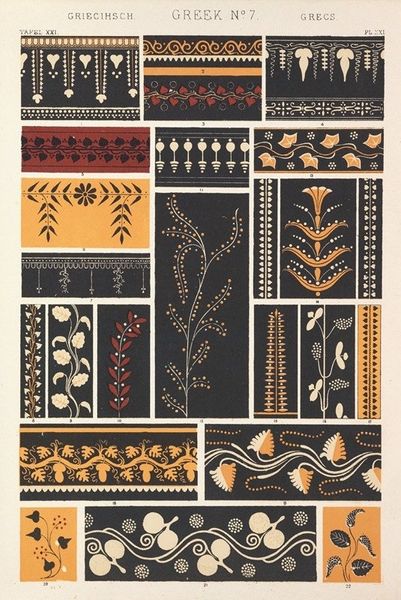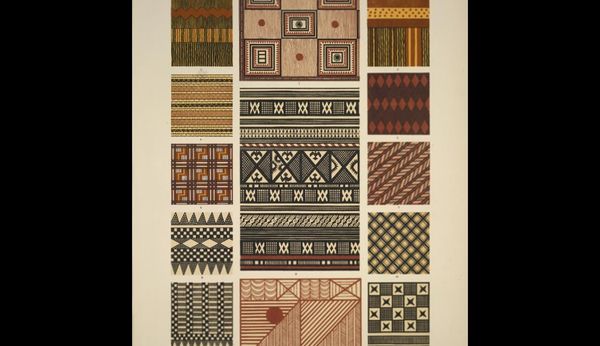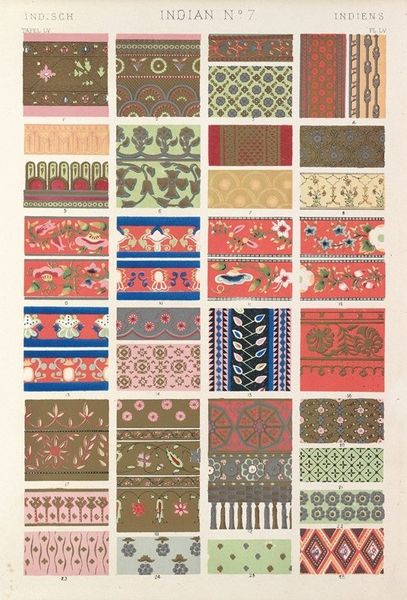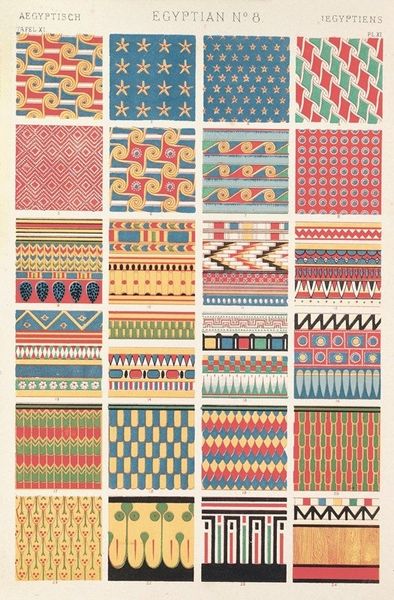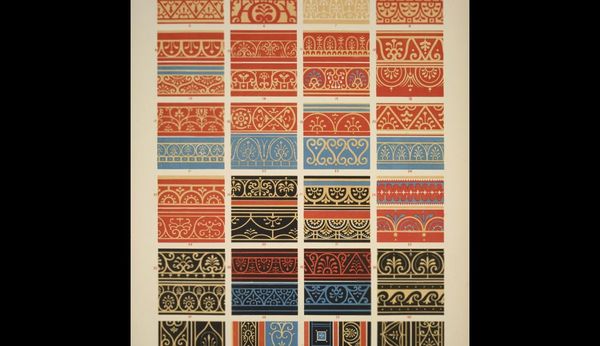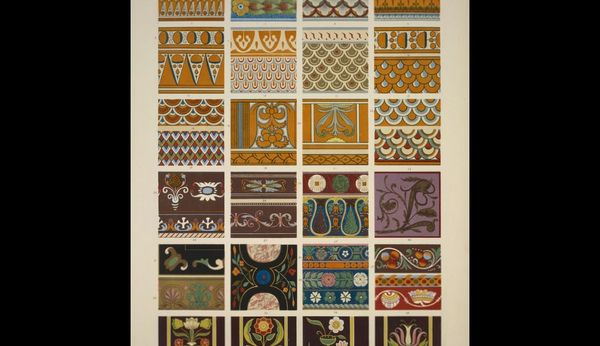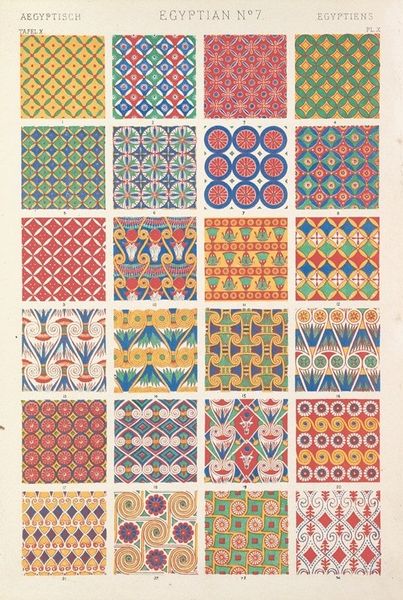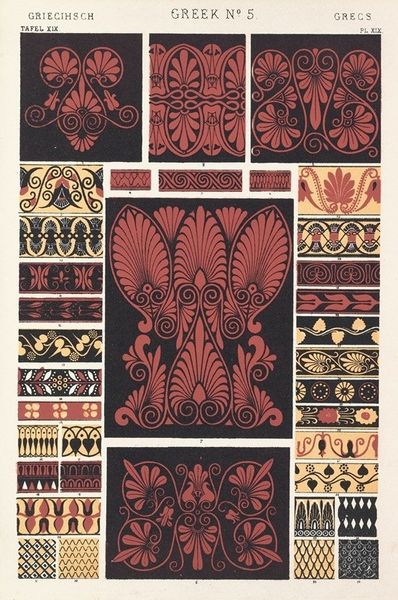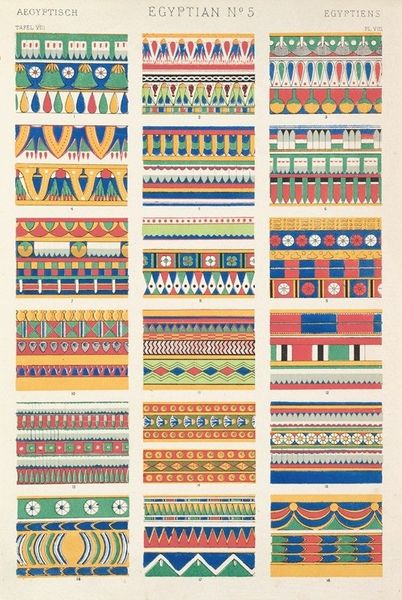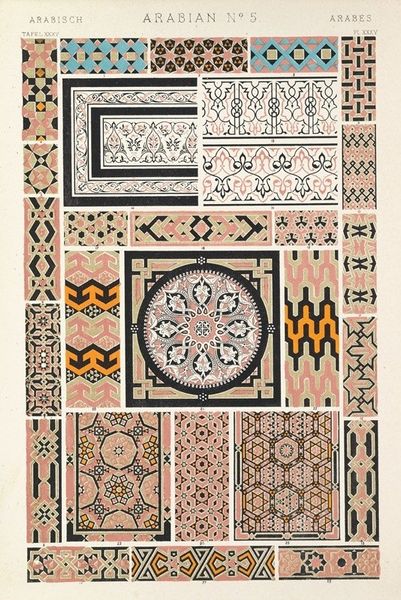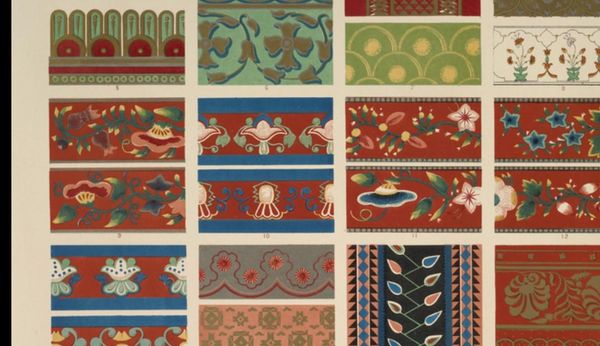
drawing, graphic-art, print, textile
#
drawing
#
graphic-art
# print
#
pattern
#
textile
#
geometric
#
ancient-mediterranean
#
line
#
textile design
#
decorative-art
Copyright: Public Domain: Artvee
Owen Jones created Greek No. 3 as a lithograph print, a study of classical Greek design. In the Victorian era, Jones was celebrated as an architect and designer, deeply influenced by historical styles. This plate reflects the 19th century's fascination with ancient civilizations, particularly the desire to emulate the perceived order and beauty of Greek art. Yet, this was also a period of British colonialism, where non-Western cultures were often either romanticized or marginalized. Jones’s work needs to be seen in this context, as the "Greek" designs were selectively chosen and presented for a British audience. Here, the motifs become abstracted and somewhat flattened, losing some of their original cultural depth in their adaptation for a different purpose. I can’t help but wonder, what stories did these patterns tell in their original settings, and what did Jones lose when he extracted them from their context? How does the act of reproduction alter the cultural narrative, turning it into something new?
Comments
No comments
Be the first to comment and join the conversation on the ultimate creative platform.

